Fighting Escalates on Ukraine’s Eastern Front: An Exclusive Report From the War Zone

Battle damage on an apartment building in Avdiivka. Photo by Nolan Peterson/Coffee or Die Magazine.
Standing in the garden of her home on the outskirts of this front-line Ukrainian town, Nastya Troitskaya points over the wall in the direction of the trenches and says: “When the shelling gets really loud, the children always cry. I try my best to stay strong for them. But inside, I’m shaking.”
Troitskaya, 39, is the mother of four children, aged 17, 13, 8, and 5. They’re all girls. Her two youngest daughters have never known peace. With her husband away for work, Troitskaya lives by herself in a house located in a rural neighborhood only a few miles from the front lines. Russian BM-21 Grad rockets have cratered her street in places.
The Ukrainian positions are dug in on the opposite side of an open field behind Troitskaya’s home. So close to the front line, the sounds of combat are very loud when they roll in. Loud enough to feel in your chest, not just your ears. The night sky often flashes from explosions, too, Troitskaya says. It’s a terrifying display, even for hardened soldiers. One wonders how civilians — and children no less — are able to adapt to life so close to an active trench war.
The percussive thuds of artillery are persistent on this day, Tuesday, April 27.
“It’s an unusually active day,” Troitskaya says, raising her chin in the direction of the front. Her tone is casual, as if describing the weather.
“Does the war still scare you?” this correspondent asks.
“No, not anymore,” Troitskaya says. “In the beginning, I was always scared. But now the explosions are just a part of life. There was shooting this morning, but we did not pay attention to it. Now, I only get scared when the explosions are really close.”
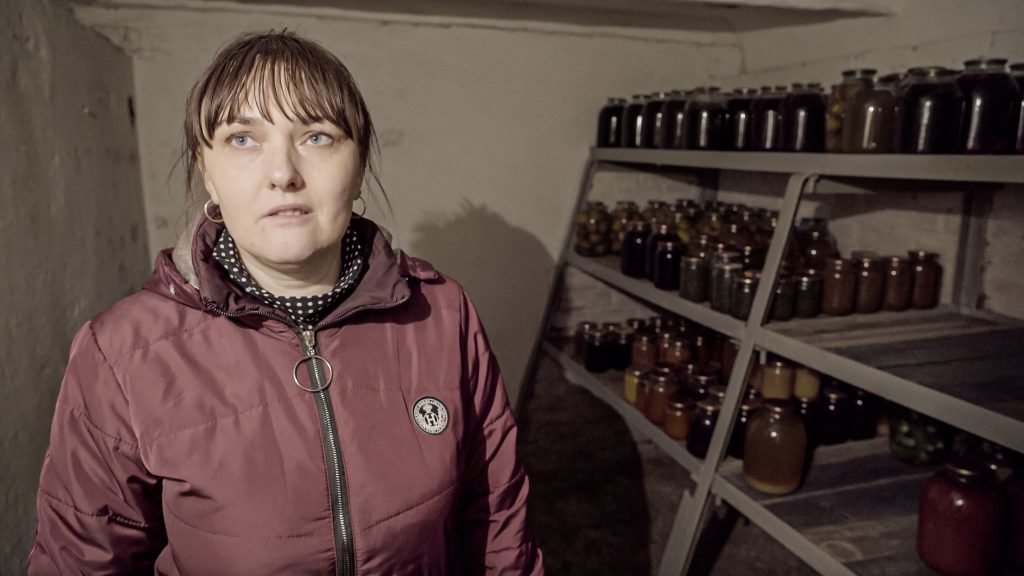
Inside her home, Troitskaya shows the kitchen floor where she and the children sleep. The spot is within a few feet of the entrance to her underground cellar. “It helps the children to sleep, knowing they can get into a safe place very quickly,” she explains.
Inside the cellar, the walls are lined with shelves stocked with bottles of pickled vegetables, jam, and “kompot” — a traditional Ukrainian fruit juice. When the shelling gets close, Troitskaya moves her children into the cellar. They sleep under the foodstuff.
“At first we were hiding in the basement. During shooting, we ran to the basement. We stayed there for a long time. Then, day by day, we started to get used to it,” Troitskaya says.
Russia announced on April 22 that it was withdrawing some of its military units, which had been massing for weeks on Ukraine’s borders. Thus, for now, the threat of an imminent Russian invasion seems to have abated. However, Ukrainian soldiers say the pace of fighting in the eastern Donbas region began to escalate in mid-January — and has not let up since Russia announced its partial military drawdown.
The general opinion among Ukrainian troops is that the crisis is far from over. And by augmenting the status quo strength of its military forces on Ukraine’s borders, some say that Moscow has achieved more leverage for coercive diplomacy toward Kyiv in the future.
“Russia’s intention is to destroy Ukraine as an independent state,” Ukrainian Maj. Gen. Serhiy Kryvonos, former deputy secretary of Ukraine’s National Security and Defense Council, told Coffee or Die Magazine in an interview.

“Russia can rapidly deploy its strike forces; they just need a justification,” Kryvonos said. “We should not engage in wishful thinking. They will attack when we are not ready.”
After seven years of combat, Ukrainian troops remain engaged in a stalemated trench war in the Donbas against a combined force of Russian regulars and their separatist proxies. A February 2015 cease-fire locked the conflict along a relatively static, roughly 250-mile-long front line. Fighting is usually done at a distance across a no man’s land that varies in width from several miles in some places, to others where the two camps are close enough to trade spoken insults.
The war in the Donbas has killed some 14,000 people. And in recent weeks, the violence has been escalating — with more than 30 Ukrainian soldiers killed so far this year.
For years, fighting along the Donbas front has typically been more active at night, when cease-fire monitors from the Organization for Security and Cooperation in Europe are generally less present along the contact line. In Avdiivka, however, the sound of shelling from the nearby trenches is intermittent throughout the daylight hours — a deviation from the war’s normally nocturnal routine.
“It’s unusual to hear so much shelling during the day,” Oleksandra Andriyashina, a Ukrainian army chaplain based in Avdiivka tells Coffee or Die. “The war is clearly far from over.”
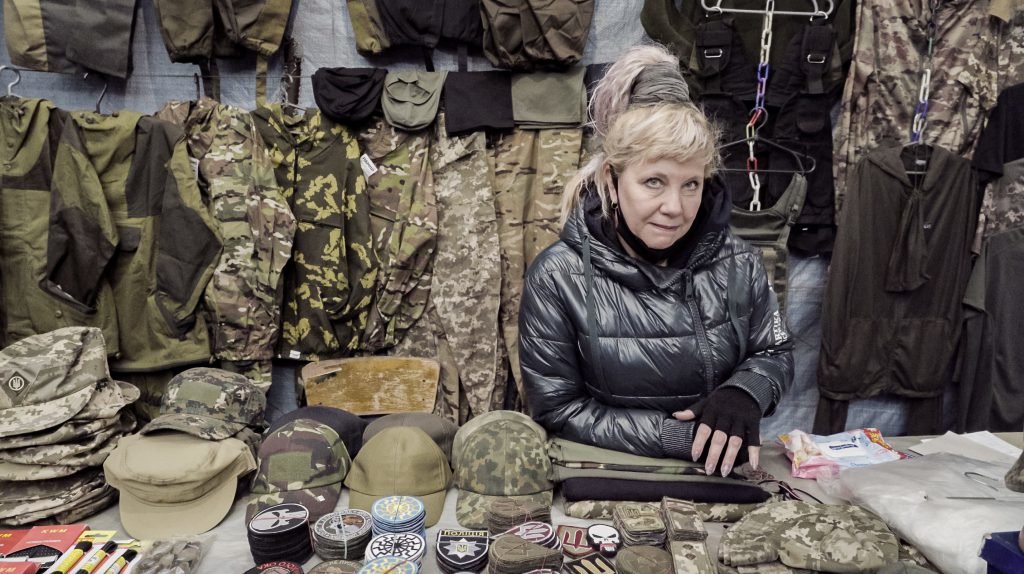
“For me it is nothing already,” Troitskaya says of the escalated violence. “Compared with what we have been through earlier, it is nothing now. Because when you have witnessed Grad rockets flying above your heads, or when you have seen shells put right near your house … what is happening now is just a performance.”
Avdiivka is a Ukrainian government-controlled town outside the separatist stronghold of Donetsk in eastern Ukraine. About half of the town’s pre-war population of 33,000 fled after the war began in April 2014. Of the roughly 16,000 civilians who remained by 2017, 2,000 were children, according to Ukrainian officials at the time.
For more than seven years, Avdiivka’s civilians have lived under the constant threat of shelling, rocket attacks, and gun battles. Today, the town bears prolific scars from the war. A residential apartment block on the west side of town remains an artillery-blasted ruin. Across the road, a skull and crossbones sign warns of a minefield. The intermittent pulses of artillery from the nearby front make clear that the danger has not passed. The seven-year-old war could, at any moment, still reach out and strike this embattled town.
“History always repeats itself. There are many people who understand that we need to be always ready. Our weapons should be always cleaned, because if not today then tomorrow, [Russia] will attack,” a Ukrainian soldier who identifies himself by the nom de guerre “Shultz” tells Coffee or Die.
Shultz agreed to be photographed for this report but asked that his real name not be used due to security concerns.
On an overcast April day, with the sounds of shelling periodically intruding from the nearby trenches, Shultz leads this correspondent through a section of the front that was abandoned several years ago after Ukrainian forces retook ground from the combined Russian-separatist side. Shultz identifies an outdoor toilet made of brick — its walls are pockmarked by shrapnel holes.
“We were hiding in here from the explosions … guys made it stronger a bit,” Shultz says. “If I said I wasn’t scared, I would lie for sure. It was very scary.”

Despite the war on its doorstep, life goes on in Avdiivka. Children are out in the playgrounds. The outdoor markets are open and full of shoppers. A woman pushes a stroller over a patch of sidewalk pockmarked by shrapnel. In the background, the rumble of shelling rolls in from the front. War has become a way of life — even if Avdiivka’s civilians are sometimes caught in the crossfire.
In January 2017, for example, combined Russian-separatist shelling knocked out power lines supplying the Avdiivka Coke and Chemical Plant. All power and heating for the town comes from the Soviet-era facility. So, as temperatures plunged to double digits below zero Celsius, Avdiivka went dark and cold. Petro Poroshenko, Ukraine’s president at the time, called the situation a “humanitarian disaster.”
“Some of the kids were born right before the war started, they are 8 years old now, and they do not remember the world without the war. They simply do not know how it is possible,” says Mila Lebitko, the director of a nonprofit called Free Space for Youth, which provides services for orphans and handicapped children in Avdiivka.
“[The children] simply do not know how to live without a war, that is why they treat the war as a reality, how things should be. They have a fear when there are shootings, because some of them live right at the front lines, where bullets are flying even now,” Lebitko tells Coffee or Die.
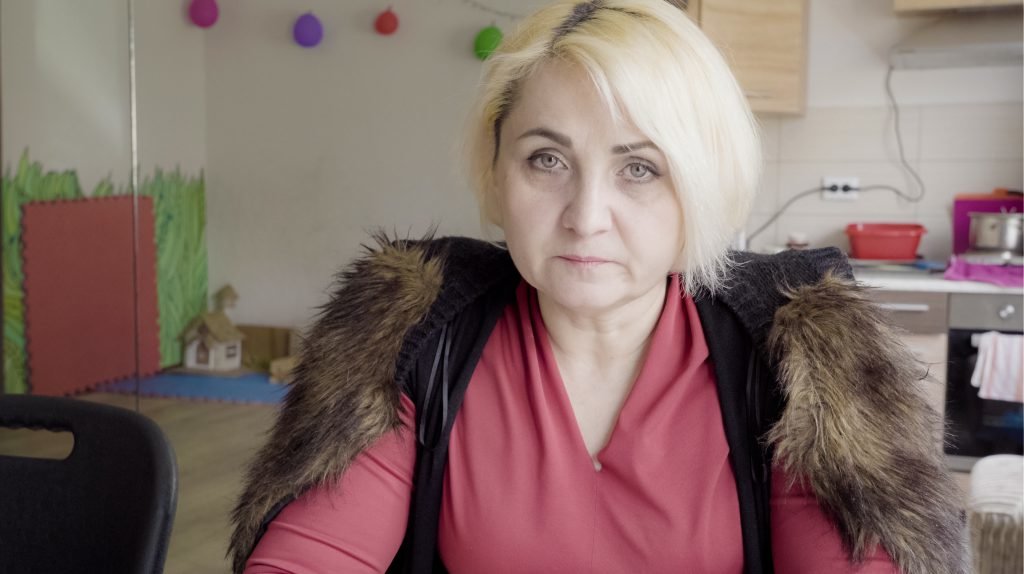
The war in the Donbas has changed in other ways besides its intensity.
For years, Ukrainian intelligence estimates had put the entire combined Russian-separatist force in the Donbas at roughly 30,000 soldiers — with only a couple of thousand Russian regulars serving in command and control roles. Russian officers still make up the chain of command, but the estimated share of Russian fighters on the front lines has risen, some front-line Ukrainian troops tell Coffee or Die.
Oleksandr, a 42-year-old officer in a Ukrainian reconnaissance unit, estimates the composition of forces within the combined Russian-separatist camp is now a 50-50 split between Russians and east-Ukrainian separatists.
“Almost all the officers are Russians,” Oleksandr says during an interview in Avdiivka.
Oleksandr has served in combat since the war’s outset in 2014. He frequently conducts missions across no man’s land and asked that his last name not be used in this report due to the sensitive nature of his work.
Despite US and Ukrainian reports to the contrary, Moscow denies that its soldiers are involved in the Donbas conflict at all. Coffee or Die could not independently confirm the breakdown of the combined Russian-separatist camp. However, if true, the alleged increase in the percentage of Russians on the front line is likely linked to Moscow’s distribution of Russian passports to Ukrainians within the two breakaway territories in the Donbas — the Donetsk People’s Republic, or DNR, and the Luhansk People’s Republic, or LNR.
With Russian passports in hand, some formerly pro-Russian separatists are now, technically speaking, Russian soldiers. A Kremlin official recently reported that more than 500,000 Russian passports had been issued to Ukrainians living in the Donbas.
“By the end of this year, up to 1 million Donbas residents will have become Russian citizens,” said Viktor Vodolatsky, deputy chair of the Russian State Duma’s Committee for CIS Affairs and Eurasian Integration and Relations with Compatriots, according to an April 24 report by the Russian news site TASS.

Many Ukrainian defense officials and lawmakers believe that Moscow’s push to hand out passports in the Donbas could be part of a gambit to justify the deployment of Russian troops as a “peacekeeping” force — presumably for the protection of Russian citizens in the embattled Ukrainian region.
Within Avdiivka, Russian disinformation is rampant and toxic and undercuts Ukraine’s war effort. Many civilians still receive radio broadcasts and cable TV stations from Russia, as well as from the adjacent separatist territories. In the event of a large escalation in the Donbas, some Ukrainian military personnel anticipate that a portion of Avdiivka’s civilian population may side with the Russian camp.
“Some people here see Russia as a strong power,” Oleksandr, the Ukrainian reconnaissance officer, says. “They want peace but don’t know under what government they want it.”
In 2015, Kyiv passed a series of “decommunization” laws intended to eradicate vestiges of the Soviet Union as part of a broader cultural divorce from Russia. In Avdiivka, however, there’s a Soviet war memorial with a fighter jet sporting the red stars of the Soviet Air Force. As is common at such Soviet-era memorials across Ukraine, the one in Avdiivka lists the duration of World War II as 1941 to 1945. Ukraine’s government now officially recognizes that the war began in 1939 with the joint Nazi-Soviet invasion of Poland.
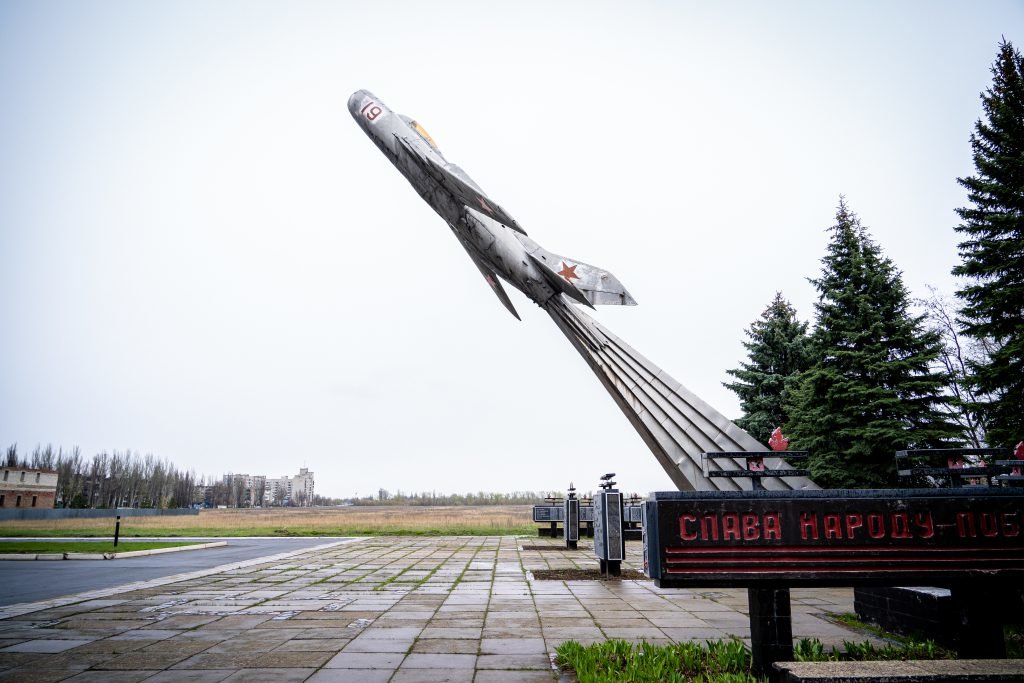
Today, the biggest threats to Ukrainian soldiers deployed to the Donbas war zone include: snipers, shelling, armed small drones (that drop grenades and anti-personnel mines), and improvised explosive devices.
Another Russian trend is to launch POM-2 antipersonnel mines across no man’s land using RPG-7 launchers and 82 mm mortars — sometimes, the mines are dropped from drones, too. The Russian side reportedly disperses the mines near Ukrainian resupply lines.
“The POM-2 is not a hugely proliferated type of mine, and its emergence in warzones around the world are usually associated with military presence of the Russian Federation, such has been the case with the Donbas, Syria, and Libya,” the Atlantic Council’s Digital Forensic Research Lab reported in October 2020.
The POM-2 mine automatically self-destructs if it is not triggered within a certain amount of time. Thus, the use of this system, along with other types of mines and improvised explosive devices, poses a lethal threat to the local civilian population.
In eastern Ukraine, some 2 million civilians — including more than 200,000 children — live in close proximity to land saturated with mines and unexploded ordnance, according to relief agency reports. Around Avdiivka, nearly every feral stretch of land is marked by skull and crossbones signs that warn of mines.
As of March 31, 2020, land mines and unexploded ordnance had killed 329 civilians in eastern Ukraine. Citing a 2019 United Nations study, the Atlantic Council reports: “Eastern Ukraine is one of the most landmine contaminated areas in the world, with landmines and other explosive hazards causing over 40 percent of casualties among civilians in eastern Ukraine in 2018.”
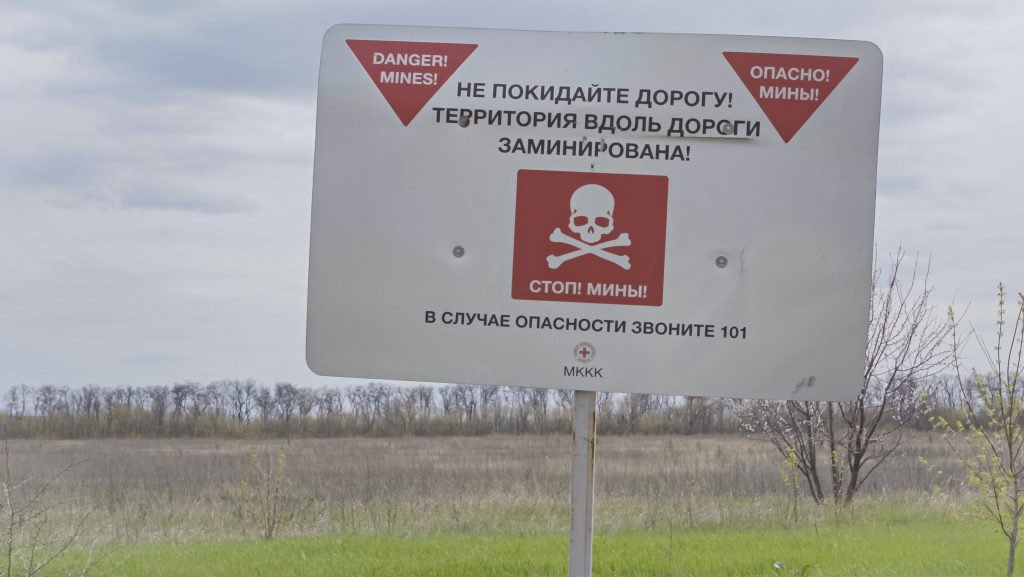
Most Ukrainian fatalities from snipers are due to headshots, Ukrainian soldiers say. Oleksandr, the Ukrainian recon officer, says that at one Ukrainian position near Zolote, a single sniper killed five Ukrainian soldiers. They were all shot through the eyes, Oleksandr says.
“Snipers are the biggest threat,” Oleksandr says, adding that some of the Russian-side snipers use thermal scopes and are able to work at night or in inclement weather. “They’re Russian Special Forces. And very good.”
Russian electronic warfare systems also pose a widespread threat. The jamming of drones is common practice. (The US Raven drone, used sparingly by some Ukrainian units, has proven particularly vulnerable to Russian jamming.) Some Ukrainian soldiers use smartphone messaging apps to communicate when not immediately in the trenches. Their line of thinking is that they can more readily “blend in” to the electromagnetic background din near civilian settlements by using commercially available cellular phones, rather than encrypted military radios.
Ukrainians had once been engaged in a “creeping offensive” to gain tactical advantages over the Russian camp by taking small pockets of key terrain. However, that strategy is now over, and the war is locked in a totally static stalemate. The Russian camp has also reportedly reduced the frequency of its raids across no man’s land, leaning more heavily on shelling, armed drones, mines, and snipers to exact a steady drip of casualties on the Ukrainian side.

The threat of armed drones, in particular, has changed how the Ukrainians operate in the trenches. A special emphasis is now placed on concealment, whereas in the first years of the conflict it was not uncommon to observe Ukrainian soldiers clustered outside smoking, even at night. Ukrainian soldiers are also more cognizant about electromagnetic discipline, having learned from experience that Russian artillery can home in on errant cell phone signals.
In the first years of the war, many front-line Ukrainian units were heavily dependent on civilian volunteers for basic kit, food, and first-aid supplies. However, the Ukrainian military has since worked out its logistical woes and is now able to meet its supply needs without relying on civil society, or foreign aid, to make up the shortfall.
Yet, despite the Ukrainian armed forces’ logistical progress, manning remains a perpetual challenge. Many front-line units are at only 50% to 60% of their intended manpower, according to Ukrainian defense officials and journalists.
Another emerging issue is the erosion of combat experience within the ranks after years of personnel turnover. Oleksandr, the reconnaissance unit officer, estimates that no more than about 15% of Ukraine’s military personnel have combat experience from the early days of the war in 2014 and 2015, when combat was much more dynamic and at times included a manned airpower component.
“I’m not tired of the fighting, or weary,” says Oleksandr, who has been at war since 2014. “Our main task is to preserve our country as a whole. And we’ll keep doing it. This is my country. And Russia invaded. It’s as simple as that.”
Read Next:

BRCC and Bad Moon Print Press team up for an exclusive, limited-edition T-shirt design!
BRCC partners with Team Room Design for an exclusive T-shirt release!
Thirty Seconds Out has partnered with BRCC for an exclusive shirt design invoking the God of Winter.
Lucas O'Hara of Grizzly Forge has teamed up with BRCC for a badass, exclusive Shirt Club T-shirt design featuring his most popular knife and tiomahawk.
Coffee or Die sits down with one of the graphic designers behind Black Rifle Coffee's signature look and vibe.
Biden will award the Medal of Honor to a Vietnam War Army helicopter pilot who risked his life to save a reconnaissance team from almost certain death.
Ever wonder how much Jack Mandaville would f*ck sh*t up if he went back in time? The American Revolution didn't even see him coming.
A nearly 200-year-old West Point time capsule that at first appeared to yield little more than dust contains hidden treasure, the US Military Academy said.












